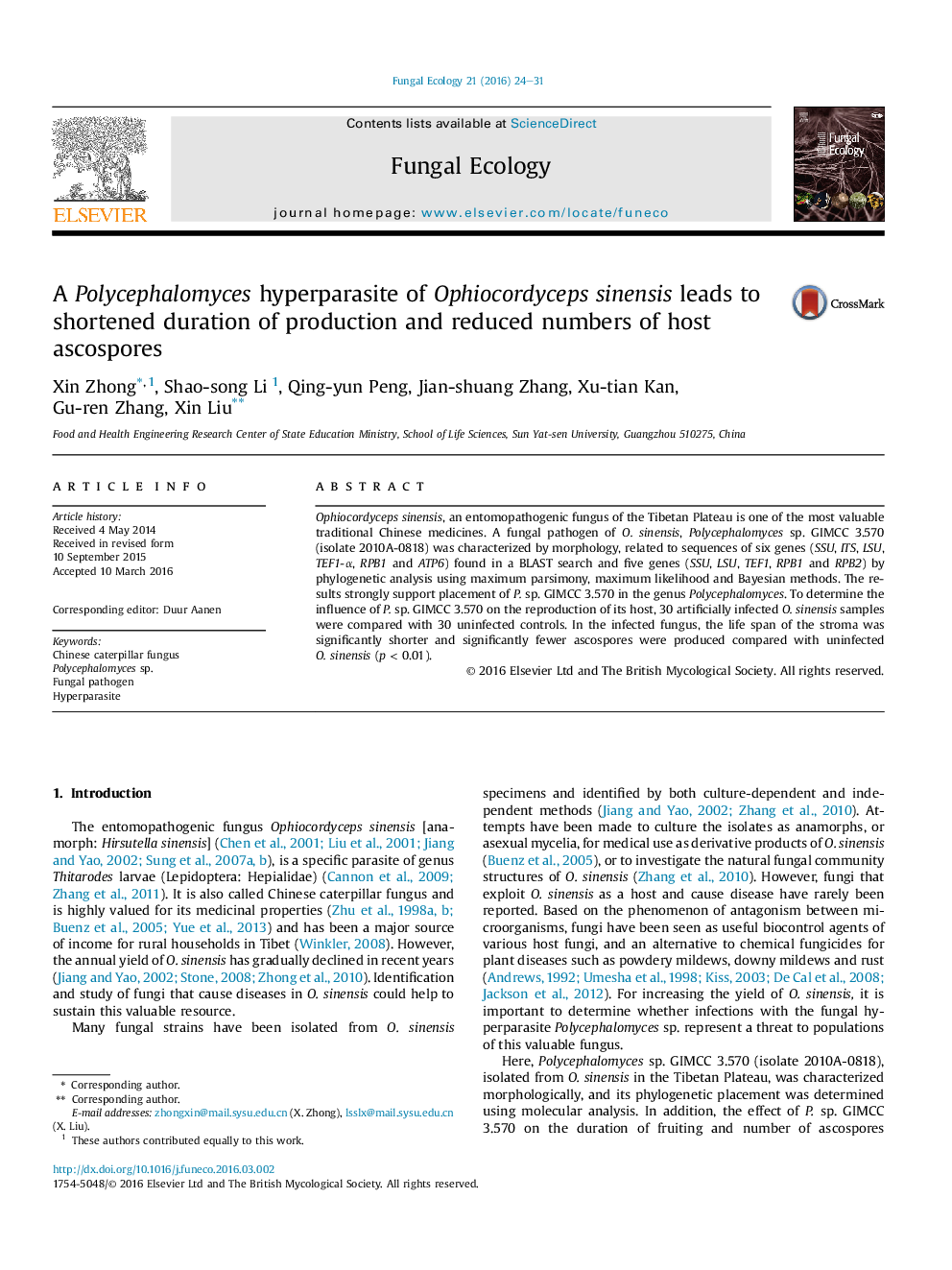| Article ID | Journal | Published Year | Pages | File Type |
|---|---|---|---|---|
| 8384410 | Fungal Ecology | 2016 | 8 Pages |
Abstract
Ophiocordyceps sinensis, an entomopathogenic fungus of the Tibetan Plateau is one of the most valuable traditional Chinese medicines. A fungal pathogen of O. sinensis, Polycephalomyces sp. GIMCC 3.570 (isolate 2010A-0818) was characterized by morphology, related to sequences of six genes (SSU, ITS, LSU, TEF1-α, RPB1 and ATP6) found in a BLAST search and five genes (SSU, LSU, TEF1, RPB1 and RPB2) by phylogenetic analysis using maximum parsimony, maximum likelihood and Bayesian methods. The results strongly support placement of P. sp. GIMCC 3.570 in the genus Polycephalomyces. To determine the influence of P. sp. GIMCC 3.570 on the reproduction of its host, 30 artificially infected O. sinensis samples were compared with 30 uninfected controls. In the infected fungus, the life span of the stroma was significantly shorter and significantly fewer ascospores were produced compared with uninfected O. sinensis (p < 0.01).
Related Topics
Life Sciences
Agricultural and Biological Sciences
Ecology, Evolution, Behavior and Systematics
Authors
Xin Zhong, Shao-song Li, Qing-yun Peng, Jian-shuang Zhang, Xu-tian Kan, Gu-ren Zhang, Xin Liu,
